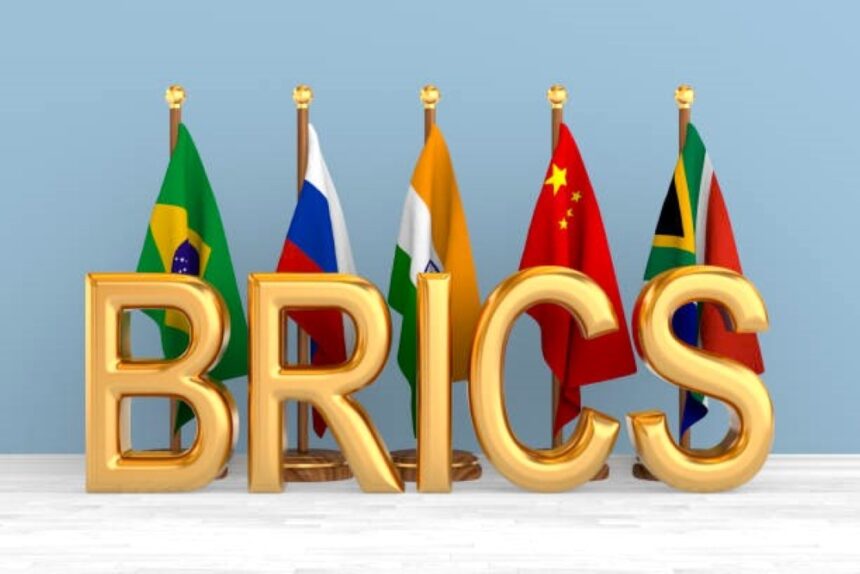The potential introduction of a BRICS currency could have significant implications for the US dollar’s dominance. While the creation of such a currency is still under discussion and not yet imminent, the idea has sparked considerable debate among economists and policymakers.
BRICS Currency Nomenclature
Originally was anticipated this the newly created currency will be introduced at the subsequent BRICS conference in 2024. Nevertheless, veteran Russian official Ushakov provided an update on the BRICS money over an interview. He presented BRICS Pay, which is an electronic payment system built around the technology of block-chain. That has still to be formally released by BRICS. Simply put it plainly, it is a digital currency, not a printed kind.
BRICS Possible Impacts on the US Dollar
- Weakening Dollar Dominance: A new BRICS currency could challenge the US dollar’s status as the world’s primary reserve currency. This would weaken the power of US sanctions and might lead to a decline in the dollar’s value (Nasdaq News) (INN).
- De-Dollarization: Countries worldwide are already seeking alternatives to the US dollar. For example, China and Russia are trading in their own currencies, and nations like India, Kenya, and Malaysia are signing agreements to trade in local currencies (INN). A BRICS currency could accelerate this trend, further reducing reliance on the dollar.
- Economic Stability and Trade: If a BRICS currency stabilizes against the dollar, it could promote more efficient cross-border transactions and financial inclusion among member countries. This could also increase economic integration within the BRICS nations and beyond (Nasdaq News) (The Daily Hodl).
- Geopolitical Influence: The expansion of BRICS and the potential introduction of a currency backed by a basket of member currencies. Or or even commodities like gold could enhance the bloc’s influence in global trade and finance. This could shift the balance of power, especially if countries are required to trade using the new currency rather than the US dollar (The Daily Hodl) (businessinsider.com).
Challenges and Considerations
- Diverse Economies: The BRICS countries have very different economic structures and levels of development, which could complicate the creation and management of a unified currency (Nasdaq News).
- Dependence on the Yuan: Non-Chinese BRICS members might find themselves increasingly dependent on China’s yuan, potentially leading to imbalances within the bloc (Nasdaq News).
- Technical and Logistical Hurdles: Establishing a new currency involves significant logistical challenges. This including creating a new central bank, ensuring economic alignment among member countries, and gaining international acceptance (INN) (businessinsider.com).
Investor Implications
Investors might need to adjust their strategies to mitigate risks and capitalize on new opportunities. This could involve diversifying currency exposure, investing in commodities like gold, and gaining exposure to BRICS equity markets through stocks or ETFs (INN).
In conclusion, while the creation of a BRICS currency could pose a significant challenge to the US dollar’s dominance, the actual impact will depend on its adoption, stability, and the global economic landscape. Investors and policymakers will need to stay vigilant and adaptable to navigate this potential shift in the global financial system.
Strategic ramifications
Though the transition out of a both unipolar to a multipolar globe structure has begun. Should BRICS succeeds in its objective, it will earn confidence of additional countries. Directing their focus further onto the developing world’s south. This will increase trade and funding from additional nations, notably the Gulf nations. The idea underlying BRICS includes not only financial, but additionally strategic. Beijing has negotiated the Iran & Saudi reconciliation in order to strengthen their global position. By strengthening multilateral connections,. The BRICS countries may achieve and maintain stability throughout the region. Furthermore, it will help convey a softer picture of the worldwide South towards the remaining regions of the globe.
Obstacles for the Upcoming BRICS Monetary Unit
The Forex Unit is still not formally established since there is a lack of consensus between BRICS countries. India has consistently clashed over China. Indians has rejected several key projects on the BRICS framework due to animosity and competitiveness with China as well as Moscow. A further significant issue that the BRICS countries may confront is giving broad education to their respective monetary authorities. Regarding how to successfully apply the BRICS money, as well as reorganizing the banking systems and regulations.
How Realistic do you think the BRICS Money Concept? Please Share Your Thoughts?









